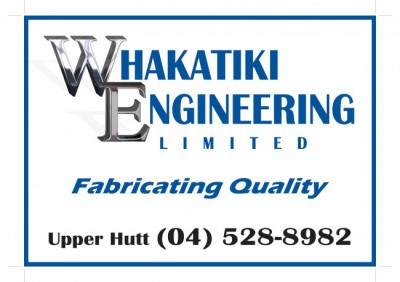Case Studies
 Case Study: Whakatiki Engineering
Case Study: Whakatiki EngineeringSteel fabricator Whakatiki Engineering employs a 14-strong team at its base in Upper Hutt, near Wellington. The company has completed the SFC scheme to construction category CC3. Director Murray Scaife (MS) gives a smaller operator’s perspective on striving for SFC status.
SFC: What drove Whakatiki’s decision to pursue SFC certification?
MS:
We’re a small operation. While quality is an important focus for us, managing quality can be an issue. And the landscape is changing: engineering consultants want solid assurances of our ability and our product. The various systems and controls that we’ve implemented in the past have all been difficult to manage and maintain. The SFC scheme is different – it’s based on proven international best-practice. The SFC scheme is a comprehensive quality management system that will give us – and our customers – confidence in our quality and our systems.
SFC: How would you describe the ISO 3834 part of the SFC process
MS:
It’s been a substantial learning curve for us, but now we have a deeper understanding of the standards and specifications. It was daunting at the start, but we were fortunate to have support from an external consultant who had experience with the certification process. We’re grateful to SCNZ and D&H Steel for introducing us to consultant Dave Gulland, a former employee of D&H Steel. Dave was instrumental in guiding D&H Steel through ISO 3834, and he has been invaluable in helping us on our journey. We would have struggled on our own; we’re a small team with limited resources.
SFC: How important is teamwork to the process?
MS:
We have regular team meetings and we took the opportunity to introduce the SFC scheme and ISO 3834 early on. It’s important that everyone understands the purpose and the goals at the outset if they are to accept it. And it’s a gradual process; we developed our understanding together, as a team.
SFC: What have been the benefits of ISO 3834 to your business?
MS:
Confidence. Our quality has improved; it wasn’t bad before, but ISO 3834 has provided increased confidence in our work. We are assured of good controls and systems, a quality product and consistent work. It instantly enabled us to control our workshop welding operations. And while it’s early days, we expect to see efficiencies in our processes; this should result in an improved bottom line and, ideally, increased demand for our products.
Beyond our business, ISO 3834 and the SFC scheme are simply good for the future of our industry. When everyone gets on board, New Zealand structural steel fabricators will have a powerful point of difference.
SFC: What advice do you have for steel fabricators considering SFC?
MS:
My advice is: involve your staff early on – get their buy in from the beginning; learn as much as possible; seek advice from SCNZ and, if you can, get support from someone who has knowledge of the ISO 3834 and SFC processes – it’s well worth having your processes reviewed by someone else.
